Did you know that a staggering 86% of businesses were targeted by phishing scams last year alone? These digital swindles are becoming increasingly sophisticated, catching even the savviest users off guard.
In today's hyper-connected world, staying safe online is no longer optional—it's absolutely critical. With cybercrime escalating, understanding how to shield yourself from phishing and online scams has become an urgent necessity.

It might surprise you to learn that a single careless click can lead to devastating data breaches. These scams often mimic trusted brands to a tee, making them deeply convincing. Incredibly, some of the world's largest corporations have fallen prey to these tactics. But that’s not even the wildest part…
Experts have been baffled by just how easy it is to fall into a phishing trap, despite years of online experience. Often, scammers employ psychological tricks that exploit human emotions like fear and urgency. Fascinatingly, some scams are even powered by AI, making them more adaptable and sophisticated. But there’s one twist that catches even the experts off guard...
Prepare to dive into the layers of deception that cybercriminals use to ensnare unsuspecting victims. What happens next shocked even the experts…
The typical phishing attack might seem like an innocuous email at first, but the devil is truly in the details. These emails often feature official logos and branding that convincingly mimic legitimate corporations. The key to their deception is in the copy; it’s crafted to incite panic or urgency. Cleverly hidden within are links that redirect to phishing websites, designed to steal your confidential information. Yet, there’s an extraordinary detail that many overlook…
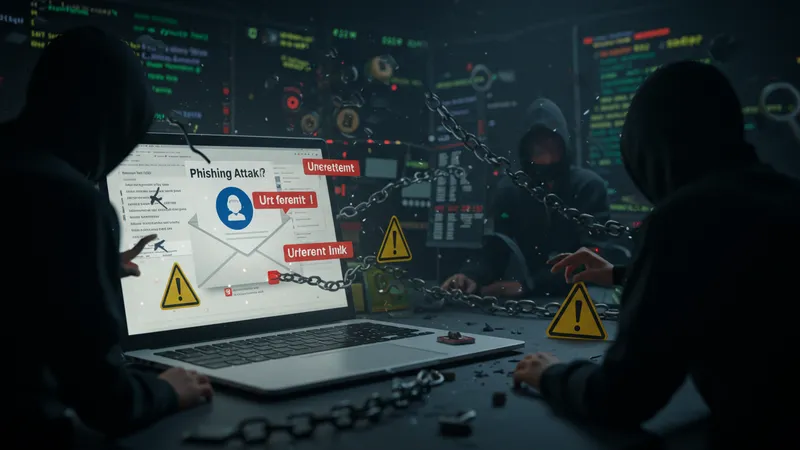
Many phishing emails are remarkably adept at evading spam filters, thanks in part to crafty coding. The phishers continually tweak their tactics, staying one step ahead of the protective technologies meant to block them. Furthermore, they might use actual, legitimate-looking websites to harvest information. The shocking truth is that these scams often fool even seasoned IT professionals. But what you’ll discover next might change how you see phishing forever.
Can you believe that, despite these risks, many internet users remain blissfully unaware of these nuances? Some companies, incredibly, don’t even train their staff on recognizing phishing red flags. Yet, this oversight costs them millions annually. The jaw-dropping effectiveness of these scams stems from deep human psychology, which is expertly maneuvered by cybercriminals. But here’s another twist you might not expect…
Organizational oversight is only part of the problem. The complexity of today’s scams requires updated defensive strategies that are often absent from traditional internet security training. Educational gaps leave even the best systems vulnerable. Thankfully, some rising tools are changing the game, showcasing how a bit of awareness can make all the difference. And that’s not all—what comes next provides a groundbreaking look at defenses you can leverage today.
Spoofed websites are perhaps one of the internet’s most insidious traps. Often appearing identical to genuine domains, they fool users into entering credentials or sensitive data. The mastery of these forgeries lies in their uncanny duplication of legitimate sites—right down to the URL structure. But there’s an unbelievable aspect that makes them even more treacherous…
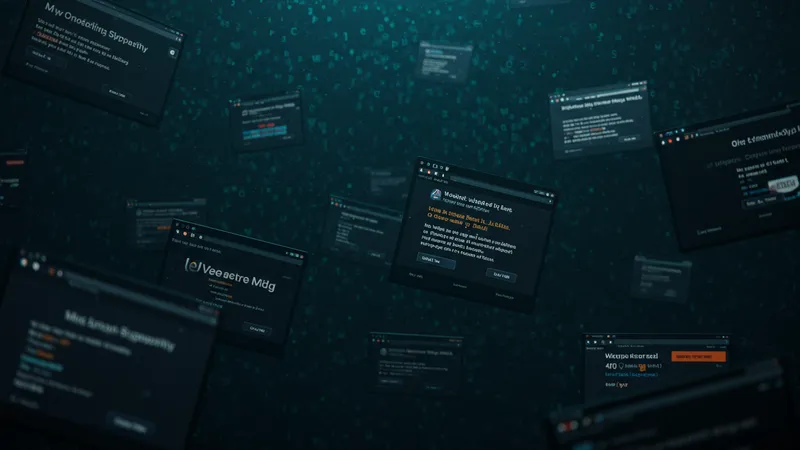
The clever simplicity behind spoofed websites is in their design symmetry. By using Unicode characters that look similar to real domain names, phishers fake authenticity. This cunning play of characters can easily deceive the naked eye, resulting in stolen passwords or personal information. Stunningly, it’s not just novices who fall for these traps. Even seasoned professionals have been duped, showcasing the subtle genius of these scams. But brace yourself, because there’s a revelation coming that you might not be expecting.
Many people mistakenly believe that avoiding these scams is simply a matter of vigilance. However, with phishing tactics continuously evolving, the defensive game requires constant adaptation and attention. Surprisingly, some of the most experienced tech gurus advocate for continuous education and simulation training to stay sharp against these threats. You might think spotting a spoofed site is easy, but the reality is a bit more twisted…
The truth is that heightened cybersecurity awareness and dynamic training initiatives are vital for protection. Spoofed websites take advantage of complacency, targeting users who overestimate their ability to recognize deceit. But there’s a newfound twist that reshapes this narrative, offering a glimmer of hope and strategy, which could redefine your online security practices forever.
Phishing attacks leverage psychological manipulation as their primary tool, exploiting human behaviors and emotions. By instilling fear, urgency, or authority, these scams press people to act without thinking. Unknown to many, there’s a fascinating interplay of psychology at work here, designed meticulously to trap even the most vigilant users. But astonishingly, that’s only the beginning…

The practice of building urgency—fake warnings of account suspensions or fraudulent activity—plays on the human impulse for immediate action. Interestingly, phishers often design messages to resonate with personal concerns, using information harvested from social sites to tailor messages. This potent mix of psychological tactics is breathtakingly effective, illustrating how human nature is a tool for such manipulation. Yet, another unexpected layer adds further intrigue to this story.
What might surprise you is how deeply integrated these psychological tricks are in daily communications. Corporations are becoming more aware, incorporating psychological awareness into their training efforts. Yet, the ever-evolving tactics of scammers continually test these defenses. Despite sophisticated training tools, complacency and budget constraints create openings for these attacks. What’s most thought-provoking is how future innovations might counteract these vulnerabilities...
Emerging strategies focus on incorporating psychological insights into cybersecurity frameworks—an interdisciplinary approach that brings promise. By understanding human behavior, we can engineer stronger shields against manipulation. This deep dive into human psychology not only arms you against digital scammers but also paves the way for more profound discussions on digital ethics. But where do we draw the line? The next chapter unravels even more unexpected turns.
In the world of phishing, Artificial Intelligence (AI) has become a double-edged sword. On one hand, it’s a tool for creating more convincing scams; on the other, it’s a powerful weapon against them. AI can generate, deploy, and adapt phishing schemes faster than ever before. But here’s a twist—its dual role in this landscape goes deeper than you might think…

The automation of phishing tactics through AI means scams are conducted on a scale previously unimaginable. Astonishingly, AI can simulate real human interactions, tailoring messages in ways that dramatically increase their success rates. If that itself isn’t mind-boggling, consider how AI technology itself can be trained to detect these scams, providing a fascinating paradox in the cyber game. Yet, this paradox reveals itself to be just the tip of the iceberg.
AI’s role as a defense tool rests in its ability to learn; it’s continuously updated to detect anomalies and unauthorized activity. With predictive analytics, businesses can now anticipate threats, creating an anticipatory defense. However, while AI can be our strongest ally, it requires immense data and precision to function optimally. Ironically, the same tech that bolsters security also empowers cybercriminals. But wait, there’s a captivating concept on the horizon that changes the stakes entirely…
This intertwining of AI with phishing prevention highlights an incredible potential for innovation, prompting industries to reconsider data strategies. By harnessing AI responsibly, organizations can make strides in creating safer online environments. This battle of AI vs. AI introduces profound ethical questions that reframe the entire cybersecurity discourse. The upcoming sections will delve into these futuristic developments that promise to redefine online safety.
Email providers stand as the first line of defense against phishing onslaughts, continuously updating systems to prevent malicious messages. Yet, the reality is that many phishing emails still slip through the cracks. Astoundingly, these electronic gatekeepers harbor vulnerabilities that scammers exploit. And there’s one facet of this issue that will surprise you…

Despite advanced spam filters, many major email providers struggle with the sheer volume of phishing attempts. The race between phishers and email security teams is a high-stakes, ongoing game, where phishers often adapt faster than defenses improve. The mind-boggling aspect here is how some lesser-known email services report fewer breaches, maintaining a strong track record. This discovery leads to a pivotal question: what makes them different?
Some email providers distinguish themselves by integrating AI-driven analysis and anomaly detection straight into their systems. These providers often incorporate end-to-end encryption as a standard, significantly raising the bar for privacy and protection. Stunning innovations like these offer hope and a possible blueprint for larger platforms, showing that size doesn’t always equate to security. What you read next might transform your view on email security forever.
Understanding these systems is vital, highlighting the need for proactive users who keep abreast of security features. Choosing the right email service necessitates a thoughtful approach, balancing user loyalty with shifting technological landscapes. The dialogue between tech giants and users becomes crucial as cyber threats loom larger than ever. The following sections will bring clarity to these dynamics, unraveling a vision for the future of online communication.
Cyber literacy is an invaluable asset in deterring phishing attacks. Knowledge equips users to recognize and avoid scams, making information the strongest bulwark against cybercrime. However, widespread gaps in cyber literacy create a fertile ground for phishing proliferation. Here’s a detail that often goes unnoticed…

Astonishingly, studies indicate that many users overestimate their understanding of phishing scams, leading to a false sense of security. Educational programs tend to focus more on basic safety, neglecting the sophisticated ploys that phishers employ today. This disconnect reveals the urgent need for grassroots-level education, targeting the internet’s most vulnerable spots. Fascinatingly, even basic awareness significantly reduces susceptibility, showcasing the power of informed users. But there’s an approach that might alter the entire educational discourse…
The key is crafting cybersecurity education that’s relevant and relatable. Tailoring training to fit diverse experience levels can foster a well-rounded, cyber-aware populace. Many institutions are now adopting gamified learning environments to make the learning process engaging and impactful. This method is producing promising results, bridging the chasm between general understanding and specialized knowledge. Could this be the turning point we’ve been looking for?
Given the rapidly changing digital landscape, continuous learning becomes a non-negotiable commitment. It’s about building habits that integrate safety protocols into everyday online activities. This shift towards lifelong cyber literacy promises to empower users globally, revolutionizing how individuals interact with technology. The subsequent chapters promise to unfold richer insights on fortifying personal defenses while navigating the internet uplifted by such crucial learnings.
Corporations face an immense responsibility in safeguarding data and educating their workforce against phishing. Recently, some astonishing cases highlighted how expensive oversight in this area can be, both financially and reputationally. Corporate negligence in phishing education is an unforeseen liability—one big enough to sink a ship. But could there be more to this story?

Phishing scams prey on unprepared employees, utilizing impersonation tactics that seem remarkably genuine. This situation becomes problematic when considered alongside statistics indicating rising cybersecurity threats targeting businesses of all sizes. There’s one twist in corporate cybersecurity that might surprise skeptical eyes, revealing the often-hidden failures of corporate training programs…
Despite available resources, many companies still lack comprehensive cybersecurity frameworks. Troublingly, these shortcomings make them perfect targets for phishing efforts, often resulting in multimillion-dollar breaches. However, some corporations are breaking this cycle, showing how investing in robust training and regular simulations substantially reduces risks. This shake-up is leading to new, transformative conversations within boardrooms across industries.
There’s a growing recognition of the integral role employee awareness plays in securing an organization’s future. By fostering a security-first culture, companies can significantly improve their threat resilience. Forward-thinking initiatives that prioritize continuous education position organizations ahead of potential threats, shaping a safer digital future. The forthcoming revelations promise to spice up the discussion further, outlining emerging trends in corporate security innovation.
Two-factor authentication (2FA) is often lauded as a game-changer for cybersecurity, adding an extra layer beyond simple password protection. It’s a revolutionary step towards creating safer online environments, yet, not all users have embraced it. Behind this innovation lies a compelling narrative of pushback and potential. But what’s hidden beneath this technological leap?
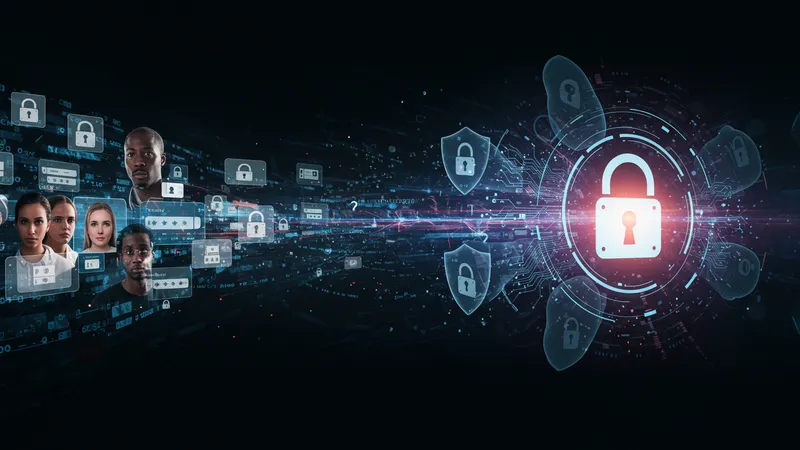
Incredibly, despite its protective benefits, a substantial number of users opt out of 2FA. Concerns over convenience, coupled with misunderstanding about its necessity, hinder widespread adoption. Here’s a little-known fact: many who initially embrace it often revert to older practices, citing ‘authentication fatigue.’ Despite these challenges, evidence suggests that 2FA drastically reduces the probability of unauthorized access, setting a new norm in digital security. But there’s a surprising dimension you might not expect…
Many major service providers now make 2FA compulsory, a move that initially faced backlash. Users’ reluctance is overshadowed by the undeniable security advantages, prompting a reevaluation of digital habits. By intertwining high-utility with usability enhancements, 2FA slowly gains acceptance among broader audiences. Yet, emerging technological shifts suggest that the future of authentication might take unforeseen forms, ushering in a new era of security.
What’s next for 2FA might surprise even seasoned experts, especially with biometric authentication on the rise. Exploring these advancements poses significant questions about user privacy and accessibility. Interesting developments in this space promise to alter the discourse around personal and data protection, ensuring safety while balancing user convenience. Anticipate the next pages to delve deeper into these fascinating changes.
Social media platforms are rapidly becoming fertile grounds for phishing schemes. The open exchange of information and connectivity creates perfect conditions for scams to proliferate. But the strategies phishers employ on these platforms are alarmingly cunning. What lies beneath these tactics is a web of sophistication you might find hard to believe…
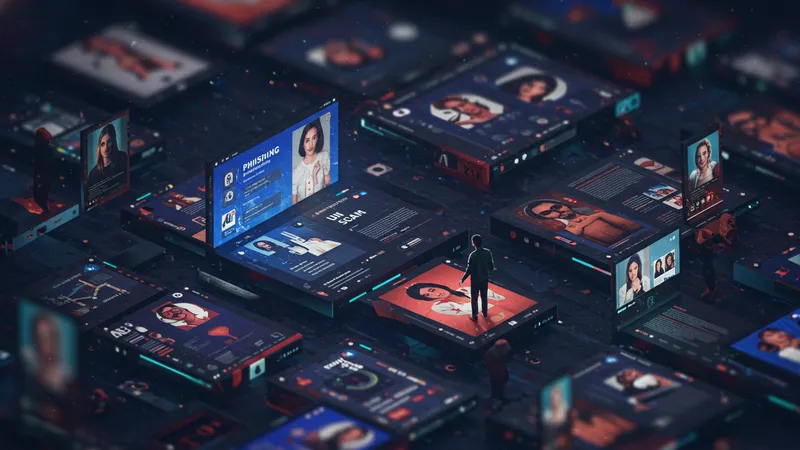
Scammers frequently exploit social networks to cast wide nets, blending into the backgrounds of countless interactions. Phishing schemes carefully curated for social media often mimic legitimate profiles, showcasing eye-catching content designed to engage unsuspecting users. Astoundingly, these scams harness the power of algorithms, hiding in plain sight while targeting specific demographics. Yet, there’s more to unravel about how social media exacerbates phishing risks.
The staggeringly rapid exchange of information on social media magnifies phishing threats, overwhelming users with misinformation. Moreover, social platforms typically prioritize user engagement over stringent security measures, creating an ongoing challenge for tech developers. Incredible though it may seem, many users remain unaware of the full scope of data they share—data that scammers weaponize against them with unnerving efficiency. But hold on, because there’s an undiscovered aspect that might alter your perspective…
In response to these rising threats, platforms are enhancing security features, encouraging users to exercise caution. Some are introducing AI-managers designed to identify false accounts perpetuating scams. Despite these improvements, user accountability remains critical; educating the masses on recognizing social media phishing attempts is paramount. Upcoming pages are sure to unlock key insights, providing a road map towards increased user safety.
The financial sector is often a prime target for phishing attacks. The sheer volume of transactions and sensitive data makes it particularly vulnerable. Astonishingly, the repercussions of a single compromised account echo far beyond immediate monetary losses. Yet, there’s a surprising side to financial phishing attempts that often goes unmentioned…

Despite strict regulations, sophisticated phishing attacks continue to evade detection, infiltrating financial networks at alarming rates. The sheer sophistication behind these scams is mind-boggling, incorporating everything from direct impersonation to cloning financial sites. Shockingly, insiders are sometimes pivotal to these breaches, albeit unknowingly. But what’s next might sound even more perplexing.
Insider awareness and robust verification processes are traditionally seen as first defenses against such scams. However, even these measures don’t always stave off cyclical phishing patterns. Astoundingly, the focus is shifting towards creating dynamic training programs, reinforcing security with continual high-stakes simulations. These programs inject new life into outdated protocols, addressing an essential need for adaptability within its framework.
Advances in encryption and authentication technologies provide fresh hope, striving to secure financial data while maintaining seamless user accessibility. Nonetheless, the complexities of financial phishing scams demand continual advancements in cybersecurity. What we explore next unveils further revolutionary solutions integral to shielding financial institutions—insights you simply can’t miss.
A mostly under-the-radar aspect of phishing involves the kits phishers use to automate and scale their work. These phishing kits drastically reduce entry barriers for wannabe cybercriminals. Yet, their existence is far more accessible and alarmingly sophisticated than most people assume. And here’s where it gets even more astounding…

Phishing kits, often sold on the dark web, come pre-packaged with easily customizable templates. This simplicity makes launching phishing scams as easy as a point-and-click process. Some kits include dynamic features that automatically update to bypass spam filters, making them both adaptable and resilient. Incredibly, even novice attackers can use these kits with little technical knowledge. But hold on, because understanding the full scope of their impact might catch you off guard.
The accessibility and adaptability of phishing kits have intensified the spread of scams, which now occur on an unprecedented scale. It’s this efficiency that magnifies the challenge for cybersecurity experts. Unsurprisingly, combating these kits requires a proactive approach that anticipates variations. This necessity fuels an ongoing race between threat actors and cybersecurity defenders. What unfolds next is crucial for understanding systemic security challenges further.
This escalating threat presents new challenges but also innovates security strategies. It’s a truth widely acknowledged that preparedness at both corporate and individual levels can majorly curb these impacts. Enhanced cybersecurity education, paired with alert systems that efficiently detect circulating kits, are making headway. The subsequent pages promise rich insights into tackling these lurking threats, empowering you with strategies to navigate digital landscapes securely.
As phishing attacks grow in number and sophistication, collaboration among industries becomes paramount. Sharing information about emerging threats allows for a collective defense mechanism. Yet, a gap exists in the willingness to share these crucial insights widely. Shockingly, the reasons behind this are deeply entwined with history and competitive instinct, but there’s a twist…

Collaboration among businesses and government agencies offers a substantial advantage, enabling a more robust collective defense. Interestingly, many industries are now finding ways to transcend past hesitations, realizing that mutual benefits outweigh individual challenges. Surprisingly, some industries are sharing data without inhibitions to cultivate best practices, showcasing a willingness to innovate security standards collaboratively. You might find the implications of these collaborations more far-reaching than initially assumed…
The technological advancements driven by these partnerships are prompting advancements in security measures. Across industry lines, programs designed to educate users and safeguard digital environments are stimulating profound shifts in cybersecurity thinking. A united front is paving the way for new standards—standards that dictate not just the present, but safeguard the future. But there’s an interesting transformation that adds to the conversation.
Shared insights help bridge existing technological gaps and remind us that the fight against cybercrime is universal. Encouraging open dialogue and innovation not only rejuvenates existing frameworks but initiates an expansive potential for emerging technologies. What happens next unveils the potential of this collaborative momentum, presenting an opportunity for unified action against growing phishing threats. Prepare to uncover transformative prospects that could reshape digital safety for everyone.
The future of cybersecurity is shaped by fascinating trends that promise to redefine online safety amidst escalating phishing challenges. Not surprisingly, advancements in artificial intelligence, quantum computing, and blockchain technology are leading the charge. These futuristic technologies play an instrumental role in fostering security, yet they bring their own set of challenges and possibilities. And what’s to come might surprise even the most seasoned tech enthusiasts…
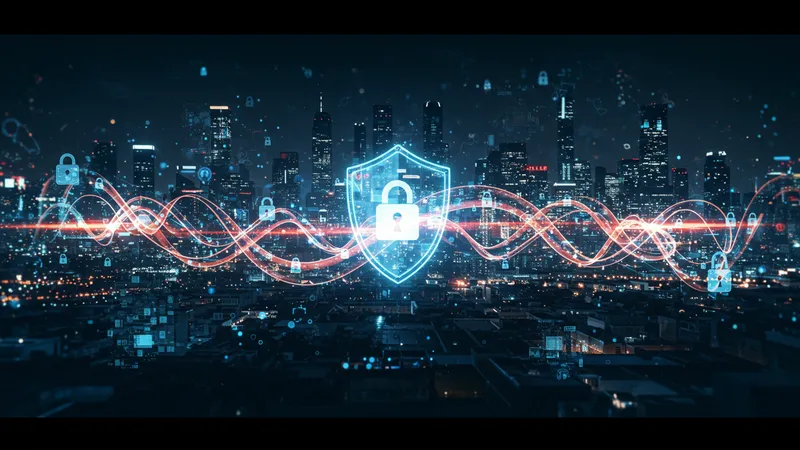
Emerging encryption technologies are set to thwart phishing attempts, with quantum computing promising unprecedented processing capabilities. Though at an early stage, quantum advancements hint at revolutionary possibilities that drastically alter the cybersecurity landscape. However, developments in quantum computing also pose fresh threats, highlighting an essential paradox—the dual role of next-gen technology as both savior and antagonist in cybersecurity. Yet, an astonishing realization regarding digital safety is on the brink of discovery.
Blockchain technology introduces intriguing possibilities, especially in ensuring transparency and verifying information authenticity. Though still nascent, its potential for enhancing cybersecurity is significant. By offering decentralized security frameworks, blockchain disrupts existing assumptions about data integrity. Importantly, acknowledging blockchain’s potential prompts a reevaluation of digital trust across industries. Could we be on the cusp of a security revolution?
The convergence of these technologies showcases how creative solutions redefine the defense strategy, arming users against evolving threats. Innovations ushered in by technology promise to reshape online experiences, emphasizing security alongside seamless user interface. What next lies in the unpredictable journey of cybersecurity, a voyage that will utilize technology and education to chart a safer digital world. Join us as we uncover the strokes of this innovative canvas.
The quest for lasting solutions to combat phishing defenses lies at the heart of ongoing cybersecurity efforts. Organizations and individuals alike must adopt a mindset of proactive vigilance. Yet, beyond tools and technology, people make the strongest security layer—a truth that’s profound but often overshadowed. Discovering the true impact of this philosophy might offer an unexpected perspective…
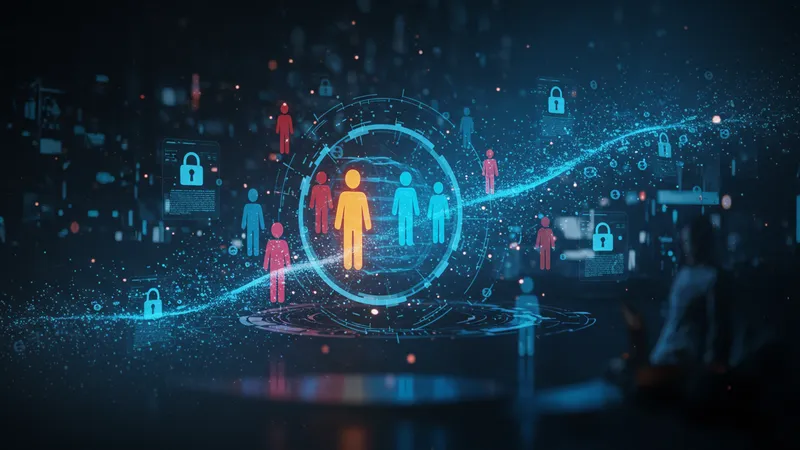
Promoting cybersecurity awareness stands as an essential facet of this defense strategy. Continuous education tailored to evolving threats serves to create a vigilant and aware user population. Interestingly, focus on fostering a strong ‘human firewall’ showcases potential to drastically curb scams, empowering users to become active defenders of their digital domains. But there’s an unprecedented factor that shakes this baseline understanding…
Security intelligence, drawn from real-world threat observation, plays a significant role. By engaging surveillance and monitoring systems, organizations tap into insights that invariably refine defense protocols. Embracing flexible, customizable solutions ensures defenses stay one step ahead of phishing attempts, prioritizing real-time adaptation. You might find the implications of such evolving solutions more transformative than previously perceived.
The path towards lasting solutions is marked by integration—melding technology with a crucial human element that appreciates the complexities of digital interactions. As these solutions mature, they address security from multifaceted angles, acknowledging both the promise and challenges technology presents. This intersection of technology and humanity sets the stage for lasting prevention, encouraging a collective response against cybercrime transgressions. Stay tuned to explore the culmination of these insights.
As the internet persistently grows and transforms, the ever-evolving landscape of phishing and online scams challenges our sense of safety and trust. However, the strategies explored here offer a beacon of hope. By leveraging advanced technologies alongside dedicated human vigilance, we can turn the tide against cybercriminals firmly.
These insights not only arm us against the present threats but also chart a path toward an innovative, secure digital future. The stakes are high, but so too are the opportunities for resilience. So educate, equip, and embrace proactive digital habits. Share these revelations widely and empower others to shield themselves in this interconnected world. Together, let’s craft defenses that evolve with the ever-shifting digital currents.